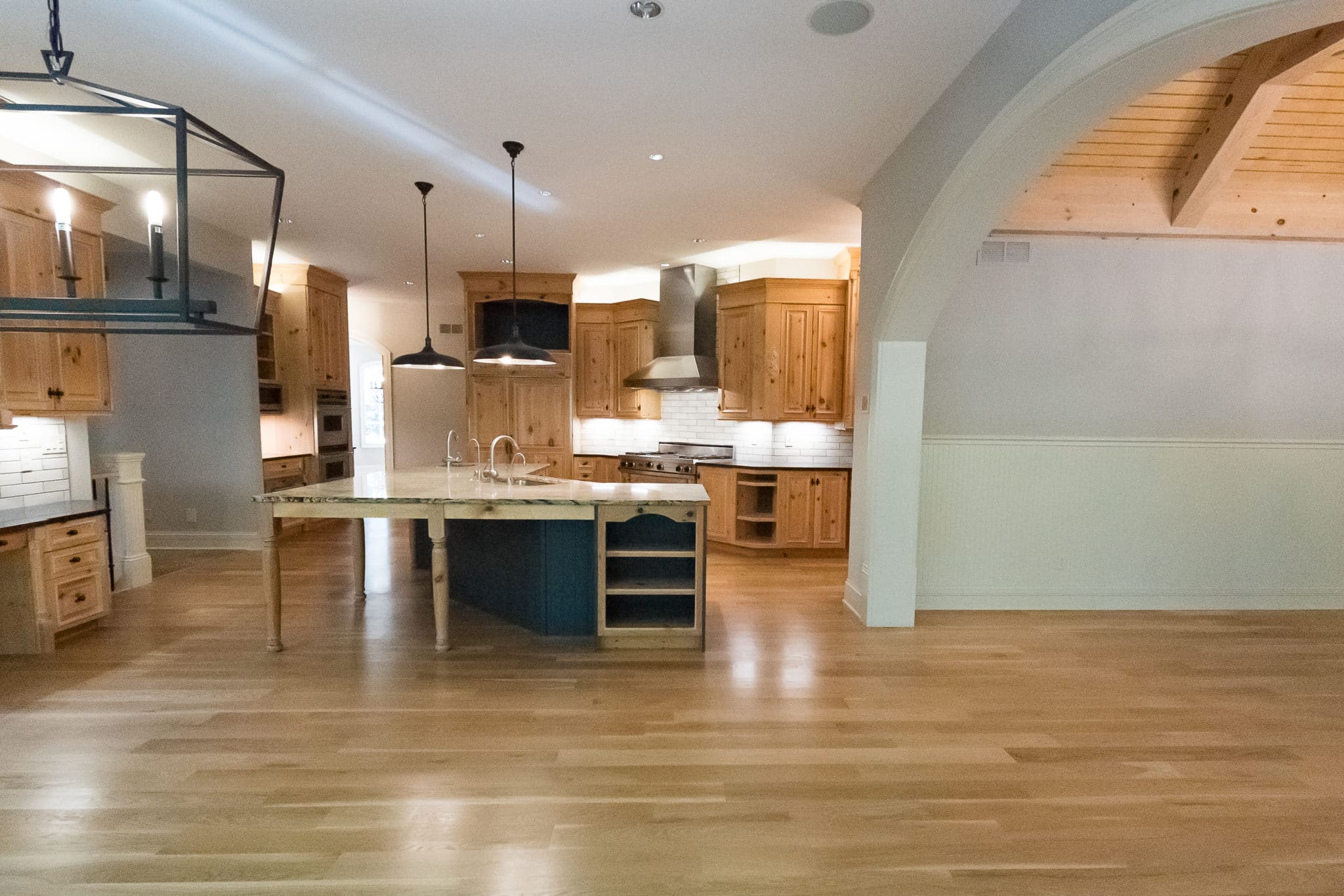If there’s a pet peeve common to all interior designers, it’s when people assume our job is only about aesthetics and decor. Yes, we want your house to be gorgeous. And there is a lot of thought, and instinct, that goes into that element of the job. But the layout and how your space functions is equally important in drawing up a good design. This is what separates a decorator from an interior designer.

An interior designer can bring in an added level of expertise — helping your home design in the early planning stages — to make sure everything looks fabulous AND performs well for you.
This often means working with your architect and/or contractor from the get-go, talking about how certain room configurations could help or hurt the overall design. And this is true whether you are building from scratch or taking on a remodel.
With both, the earlier you can involve an interior designer, the better off you’ll be.
So I wanted to spend a blog post talking about what makes a good room layout. Whether it be your kitchen, bathroom or common areas. Because there are certain factors I ALWAYS try to consider, no matter the space or project.
Let’s get started.
When Function Drives Your Layout
Before I even start thinking about how a room or house will look, I try to think about how it will be used.
This is where client feedback can be SO important. And it’s why I make sure that every project starts with a thorough conversation with my clients about their wants and needs, and likes and dislikes. This includes a discussion about how they live, on a day-to-day basis.
If we are remodeling or building an entire home, these questions may be more big-picture. For example:
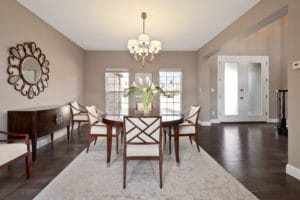
Where do they expect they will most often enter the home — the front door, or the garage entry? Where will guests enter?
Do they tend to be messy or organized?
Is this a family with kids? If yes, do they want designated kids’ spaces or more of an integrated design for the whole family?
Do they plan to “age-in-place”?
Does the client entertain? If so, do they want more formal zones for company, or a more relaxed vibe with open flow?
Delving Deeper into the Design
These questions probe even deeper as we begin planning specific rooms.
For instance, if we are designing a kitchen, I may ask how they tend to cook. Are they into elaborate meals that they prepare on their own? If so, we want to make sure there is plenty of counter top space and a good work triangle. This will keep all of the appliances, cooking utensils and equipment within easy reach.
How do they eat? If in front of the tv, we may want to consider an open floor plan that flows into the great room. However, if they prefer a more formal sit-down experience, maybe the dining room becomes their main eating area and we set it off from the kitchen.
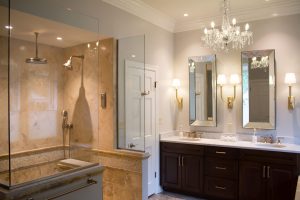
If we are designing a bathroom, we might talk about their process for getting ready. Do they tend to bring their shoes and clothes into the bathroom? Then we may want to make room for a built in bench or seating area, and plan for a full length mirror. Or maybe we design the closet(s) to be accessed from the bathroom
How long is the getting ready process? Women who spend a lot of time on their hair and makeup may want a sit-down makeup table separate from their sink vanity. But if they are the shower and go type, this would be wasted space.
Balancing Needs
To better explain, let me give you an example of a project where function helped drive the ultimate design.
In this remodel in the heart of Missouri wine country, the homeowners were used to entering their home from a side door within their laundry room. They liked how they could deposit dirty shoes and other muck there before entering the more formal parts of the home.
This made practical sense, but it also meant that the laundry room was the first thing they saw, every time they arrived home.
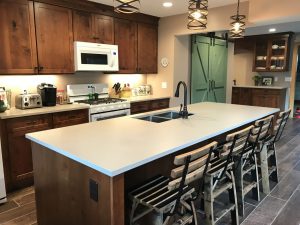
I wanted to balance function with aesthetic, so I proposed moving the kitchen toward the side door, and relocating the laundry room elsewhere.
We made the laundry accessible to the outside with a door to their wrap-around porch. That way, they still had their laundry room entrance for those dirty boot days. But they also had a more attractive entryway near the kitchen for most other occasions.
Flow Follows Function
Once I have a sense of how different spaces will be used, I try to think of how those spaces will interconnect.
Here, I am not just thinking about the actual physical connections between the spaces. I’m also thinking about how they are lived in, and how those uses connect to one another.
This goes back to several of the examples I cited above.
For instance, the flow between a main suite and its closet(s) or bathroom. Or the flow between a great room and kitchen, or kitchen and dining room. I try to walk in the steps of my clients and think about how they will travel from space to space, as they are using it. What will they see as they move along that path? What will they want or need?
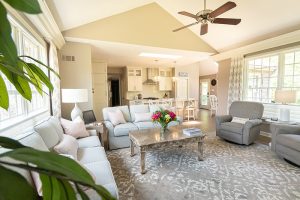
Remember, finding flow doesn’t have to be a costly or time consuming effort. In one of my more recent remodels, we were able to drastically improve the flow between the great room and kitchen by reimagining the shape of the kitchen island.
While we did have to knock some cabinets down as well, the essential difference was made by simply reworking that island space.
A Poor Layout Can Cost You
When I am helping a client with their floor plan, I always have their budget in mind.
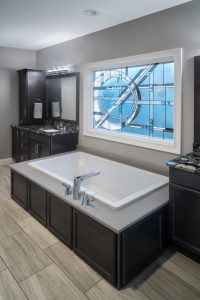
First, I want to make sure I am not making design suggestions that would push them beyond their cost expectations. Second, I also want to find creative ways to save money while improving the space.
Often, there is room in the layout process for this kind of analysis.
Want some examples? Well, one big thing that comes to mind is plumbing. There is a lot of cost savings to be found through strategic plumbing choices.
For example, if you have the option to do so, it makes the most financial sense to have all of your plumbing on the same wall, or in abutting spaces.
In a bathroom, that would mean having the toilet, sink and shower all on the same wall. Or maybe you stack your bathrooms so that the first floor powder room is directly below the second floor guest bath. Considering a pool house? Put the outdoor shower on the exterior wall of your kitchenette area or washroom.
Other Layout Savings
This concept goes beyond plumbing.
When planning outdoor living spaces, think about the need for and location of retaining walls, which carry additional expenses.
Desperate for a drop zone where the kiddos can store their coats and backpacks? Consider a multi-purpose space, which also includes a desk for bill paying or homework. Or make it part of the laundry space, to cut down on square footage.
In one project I worked on, the homeowners were looking to expand and upgrade their kitchen.
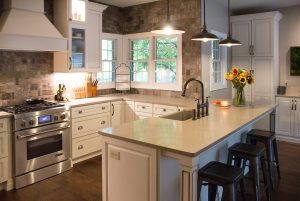 Instead of proposing a new addition onto the home, which would have been the easy answer but a more costly solution, I looked at their overall space and found room to work within the existing footprint.
Instead of proposing a new addition onto the home, which would have been the easy answer but a more costly solution, I looked at their overall space and found room to work within the existing footprint.
We took some space from an oversized powder room, and relocated the laundry room. This not only gave them more space to expand the kitchen, but they also gained a new storage space for mops, brooms, cleaning supplies and more.
It was a net gain at a much more reasonable cost.
Aesthetics
Now, this probably goes without saying, but a designer will also consider the look of the room when determining the layout.
This shouldn’t be an afterthought, but something that is ever-present in the designer’s mind when considering all of the other factors mentioned above. No one factor takes precedence over another. It is a matter of balance, and the client’s priorities.
A good interior designer will find a way to meet all of these needs, versus just one or two of them.
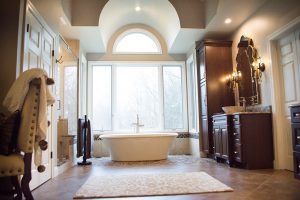
Finding a layout that works aesthetically is part instinct and part practice. But anyone — even someone without an eye for design — will notice a difference when walking into a room where the layout has been thoughtfully considered with aesthetics in mind.
Hopefully, you’ve noticed this wow factor in the projects I’ve been sharing with you on my Facebook and Instagram pages! I truly strive to create beauty for all of my clients.
Layout Lessons
The bottom line is that if you are spending time and money on a custom construction project, your layout should work for you. Don’t let it be a wasted opportunity.
And remember, an interior designer brings in a different set of skills than your architect or builder.
Our job is to consider all of the factors discussed in this blog post, and then some. If we are involved from the very beginning, you will save time and money and have more to show for it!
Thanks as always for reading my blog. I hope everyone is staying healthy and happy. Please don’t hesitate to contact me with any questions or project needs!

